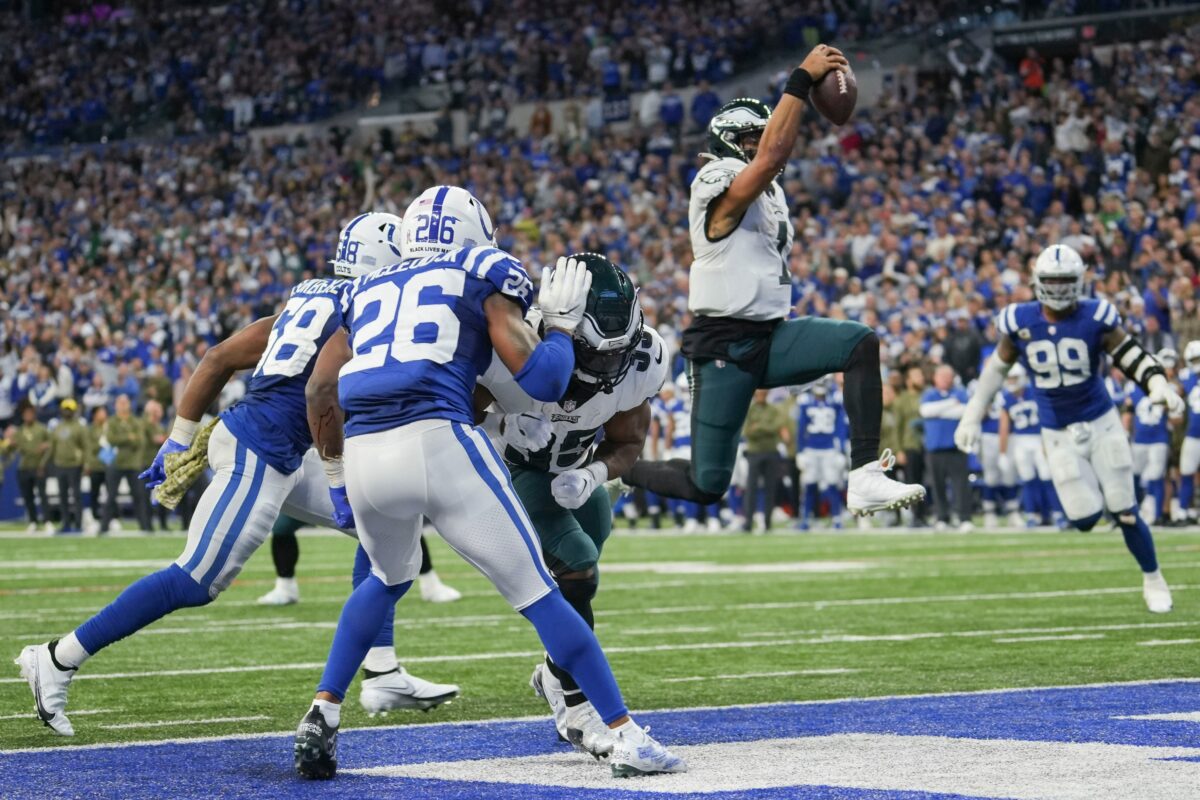Sometimes, the best thing you can do when an opposing coach out-coaches you is to hire them on your staff as quickly as you possibly can. One recent example of this was Sean McVay’s insistence that Brandon Staley should be his defensive coordinator for the 2020 season. McVay never forgot what the Chicago Bears did to his Rams and his quarterback (Jared Goff) in 2018, back when Staley was the Bears’ outside linebackers coach under defensive coordinator Vic Fangio.
In a 15-6 loss, Goff finished his night with 20 completions in 44 attempts for 180 yards, no touchdowns, and four interceptions—the worst game of his career, and that includes the series of disasters he underwent under former head coach Jeff Fisher and offensive coordinator Rob Boras in his inaugural campaign.
How a Bears beatdown in 2018 put Brandon Staley on Sean McVay’s radar
Fast-forward to Week 11 of the 2020 season, when the Indianapolis Colts welcomed the Philadelphia Eagles to Lucas Oil Stadium. The Eagles were on their way to the Super Bowl, and the Colts were in freefall after the firing of Frank Reich and the appointment of interim head coach Jeff Saturday, so this looked for all the world like an easy blowout for the Birds.
Not so fast, as they say. The 4-5-1 Colts hung with the 8-1 Eagles throughout the contest, and they had a 16-10 lead when Chase McLaughlin kicked a 37-yard field goal with 4:37 left in the fourth quarter.
Problem was, the Eagles had time and opportunity to make a comeback, which is exactly what they did. With 1:24 left in the game, Philly had the ball at the Colts’ seven-yard line, and Jalen Hurts ran into the end zone on third-and-goal with absolutely no resistance.
With that and the extra point, the Colts had a heartbreaking 17-16 loss on their hands. Indy couldn’t get any closer than their own 28-yard line on the resulting drive before ceding the ball back on fourth-and-21.
This was not the only reason the Colts hired former Eagles offensive coordinator Shane Steichen to be their new head coach, but a whole lot of Colts had a lot to say about this play, this game, and how it pointed things in Steichen’s direction.
Per the Colts’ official site, this was the first time all season the Eagles put a designed Hurts run on the field from a 3×1 set. So, while the Colts obviously has reads and indicators, nothing in their advance scouting told them that this was going to happen. The Colts were more attuned to Hurts running out of empty formations.
“Alerting for the quarterback draw was really an empty [thing],” defensive end Yannick Ngakoue said after the loss. “And then they had a running back right there. So, it was a good play call by the offensive coordinator, but we still have to make those plays.”
Defensive coordinator Gus Bradley also pointed this out.
“We were basing on third [down] in that situation and everything that we’ve had, it wasn’t a quarterback draw,” Bradley said. “They spread you out and they try to isolate you, work pick routes and things like that.”
Not in this case, of course. One thing the Colts were on the lookout for from Hurts in these situations was something he did against the Washington Commanders in the Eagles’ previous game. With 1:33 left in the first quarter of what became a 32-21 Eagles loss, Hurts looked to be running a quarterback draw from the Washington six-yard line. But the draw was a fake, the Commanders took the cheese, and Hurts had an easy touchdown pass to tight end Dallas Goedert.
Which is why, on this play, Colts linebacker Zaire Franklin wasn’t reading run — he stayed on tight end Jack Stoll instead.
“They were scheming it up very well,” Franklin said. “Usually, they run a quarterback draw out of the empty… It’s tough because against [Washington], he did the jump pass. So, I didn’t want to leave [Stoll] and give up the touchdown. Really, just a good call by them. Just have to better in that situation.”
As Steichen said at his introductory presser, “You can do so many different things with a play to dress it up.” Especially with Hurts presenting so many different kinds of threats as a runner, it’s very tough for any defense to determine what’s going on pre-snap in a Steichen offense. The 2022 Eagles played a ton out of 11 personnel (one tight end, one running back, three receivers), and they didn’t use a lot of pre-snap motion. What they wanted to do was to lull you to sleep with a lack of pre-snap variation, and then beat you over the head with chaos theory after the ball was snapped.
This game-winner against the Colts proved the worth of Steichen’s philosophies, and the Colts were smart not to forget that. In the end, it got them on the track to the head coach and offensive play-caller who could provide a necessary re-definition of their offense.
